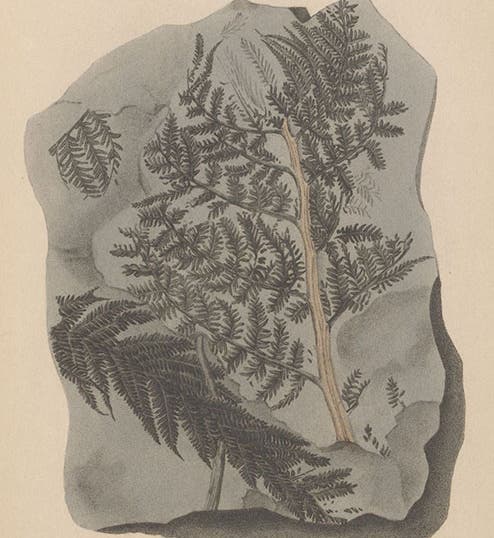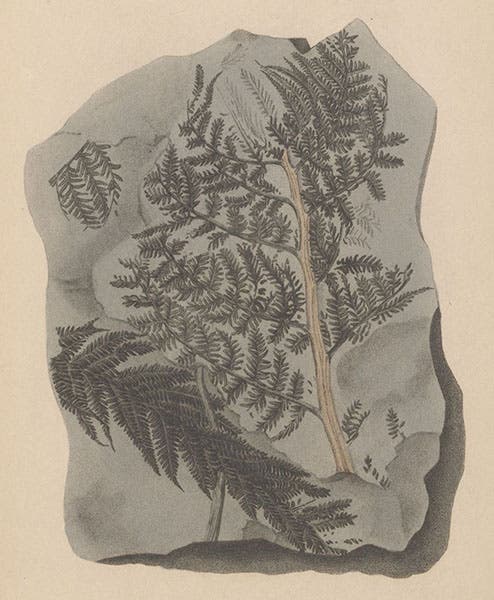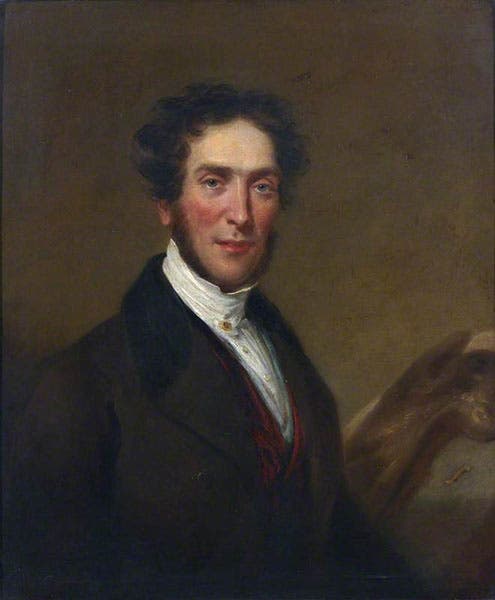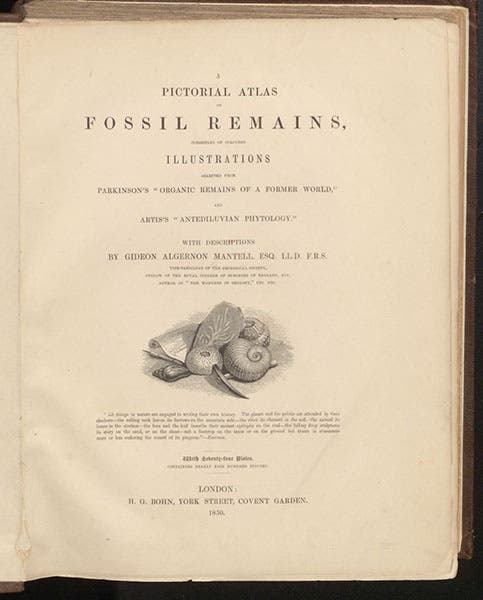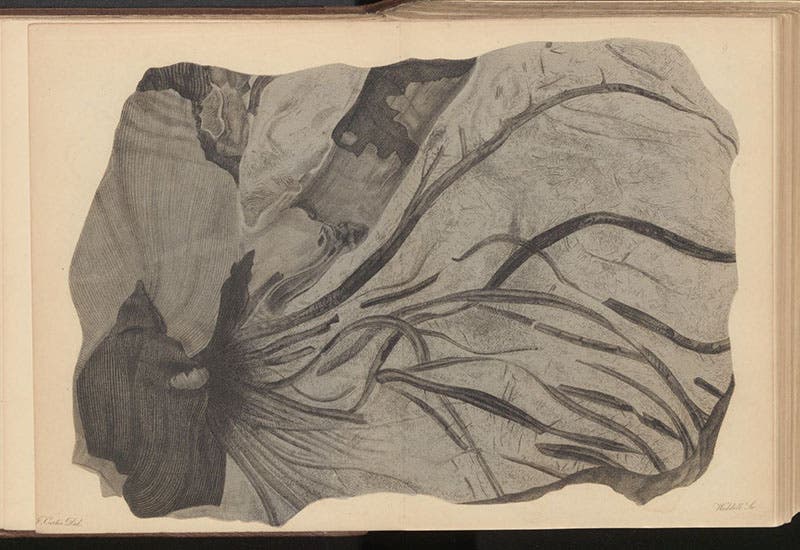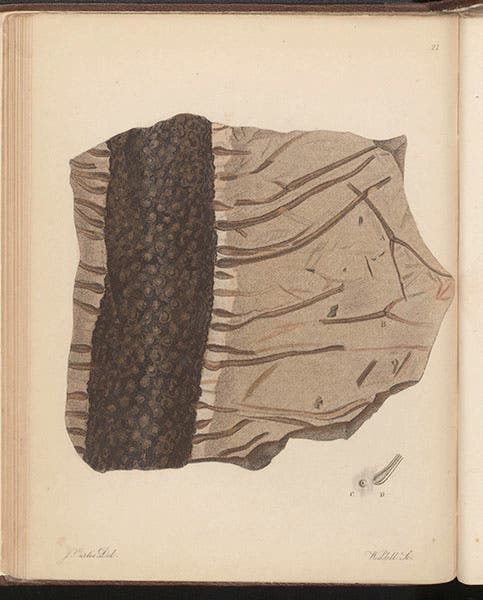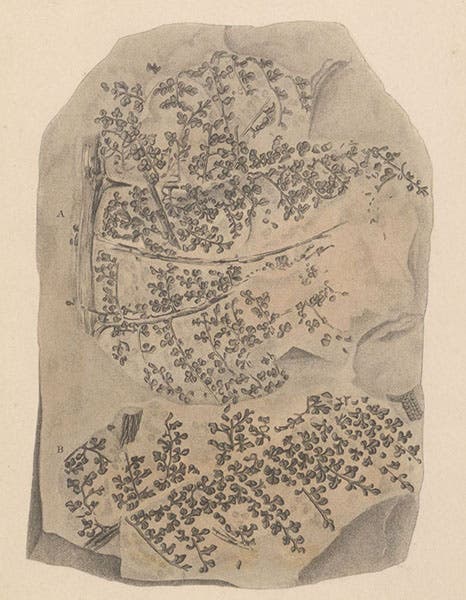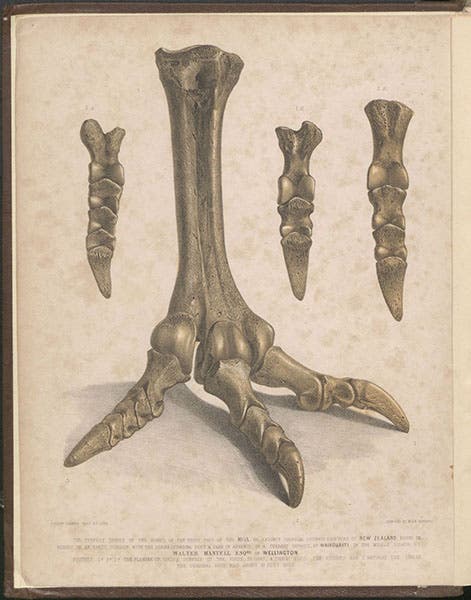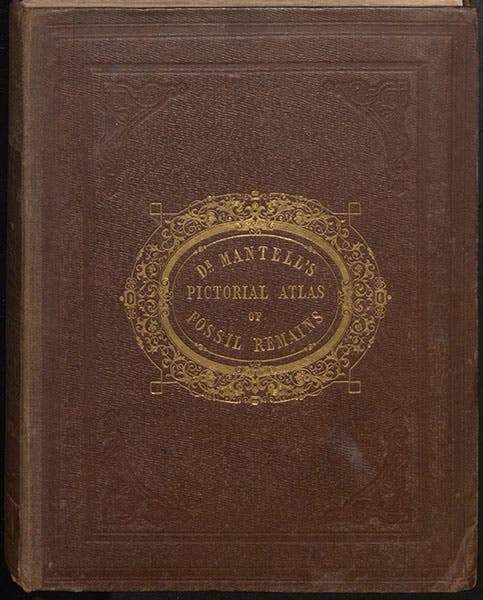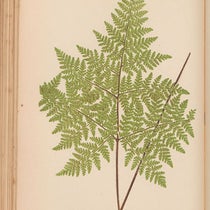Scientist of the Day - Gideon Mantell
Gideon Mantell, an English surgeon and fossil collector, was born Feb. 3, 1790. Although he had a surgical practice in Lewes in Sussex, southeast of London, he is best known for his fossil collecting, and especially for finding the remains of an extinct Mesozoic reptile which he named Iguanodon and which Richard Owen later labelled a dinosaur. This was the second dinosaur discovered (after William Buckland’s Megalosaurus), and Mantell subsequently discovered an entire Iguanodon slab, which came to be known as the Maidstone Iguanodon, still preserved, in its slab, in the Natural History Museum in London. We told the story of Mantell and the Iguanodon in an earlier post.
Mantell’s surgical practice fell off when he moved to Brighton, so that he had to sell his fossils to the British Museum, and he resorted to writing books for the general public to earn money. We are going to discuss one of those today, a book that is one of the few from mid-century to show fossils in color in large (quarto) format. The book was called: A Pictorial Atlas of Fossil Remains, and it was a republication of the plates in James Parkinson’s Organic Remains of a Former World (1808-11), a 3-volume work we have in our collections, and Edmund Artis's Antediluvian Phytology (1838), a work we do not have. Mantell wrote the descriptions of the plates, being sure to include modern scientific names, and since Parkinson’s book was published before most of the Mesozoic reptiles were discovered, Mantell added additional plates to show things like Mosasaurus (but no dinosaurs). The plates are really quite splendid, and we wish to do little more than show you some of these, and perhaps entice you to digitally leaf through the work online, in search of other pleasing engravings.
The plates of fossil plants, especially those of ferns, are the most attractive ones, and so those are mostly what we chose to include here. Nealy all of them depict fossils from Yorkshire, where many of the collieries (coal mines) were to be found. Most of the fossil plant images were taken from Artis’s book, which we do not have, so I could not make comparisons, but I am guessing that the plates were all re-engraved, since those from Parkinson were re-engraved. Once printed, the plates were hand-colored. If I didn’t miss any, there are 74 hand-colored engravings in Mantell’s Atlas, plus the frontispiece.
The frontispiece (seventh image) is a special case. It did not come from either Parkinson or Artis, but was done especially for this book. It depicts the fossil foot bones of a Moa, discovered in New Zealand in 1849, just one year before Mantell’s Atlas was published. It is, moreover, a lithograph, the only lithograph in the book, as far as I could tell. It was drawn on stone by Joseph Dinkel, a prominent scientific illustrator of the time. It functions well as an invitation to look further into the book.
Finally, we show the front cover, simply because it is simple, but attractive, with its gold-embossed title.
There is one more book by Mantell that we would like to feature someday, his Wonders of Geology (1838), of which we have several editions. We displayed it long ago in our Paper Dinosaurs exhibition, which is available online.
William B. Ashworth, Jr., Consultant for the History of Science, Linda Hall Library and Associate Professor emeritus, Department of History, University of Missouri-Kansas City. Comments or corrections are welcome; please direct to ashworthw@umkc.edu.

